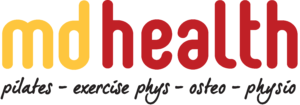Let’s get started!
How Pilates can help alleviate back pain
Back pain is a common issue that affects millions of people worldwide and it can significantly impact our daily lives, from work to leisure activities. But don’t worry – there’s hope!
Pilates has gained a reputation for being a versatile and powerful exercise method that not only improves overall fitness but also provides relief for various types of back pain.
Pilates is a low-impact exercise program that emphasises core strength, stability, and flexibility. Here are three reasons why Pilates can help alleviate and manage back pain in the long term:
1. Strengthening of spinal stabiliser muscles
A strong core is essential for maintaining spinal health and preventing back pain. Pilates is well-known for targeting the deep abdominal muscles and the deep muscle of the lower back (the multifidus muscle group) that act as spinal stabilisers, helping to support the spine during movement.
Strengthening these muscles can reduce the risk of injury and provide much-needed support for individuals with back pain by reducing the load on pain sensitive structures, such as the discs and facet joints of the lumbar spine.
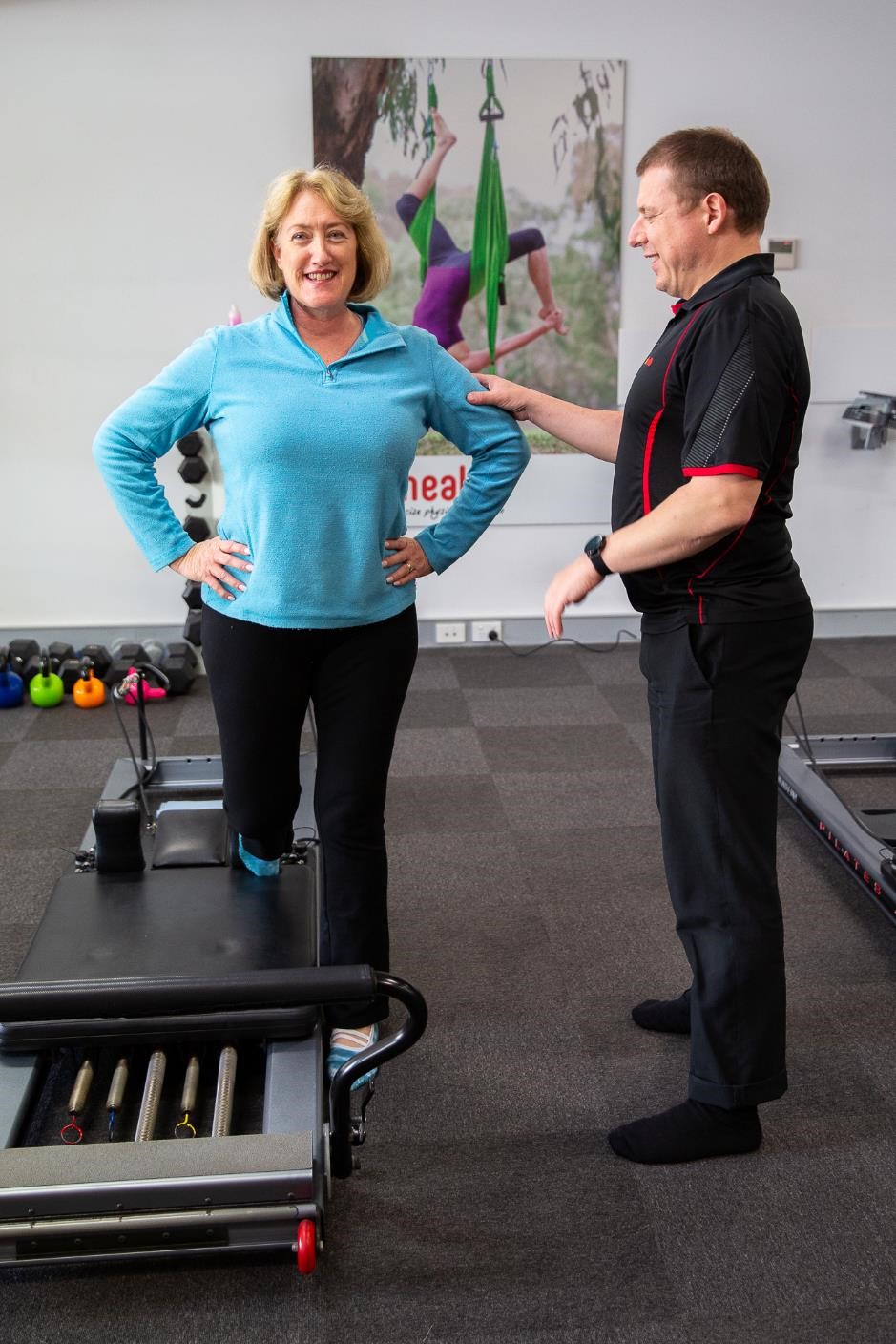
2. Correction of posture and muscle tone
One of the primary reasons Pilates is so effective for back pain relief is its focus on posture and muscle tone. Poor posture is a common contributor to back pain, as it places additional strain on the spine and surrounding muscles.
Pilates exercises emphasise proper alignment and body awareness, which can help to correct imbalances in muscle tone and promote better posture. This, in turn, can alleviate pressure on the spine and reduce back pain.
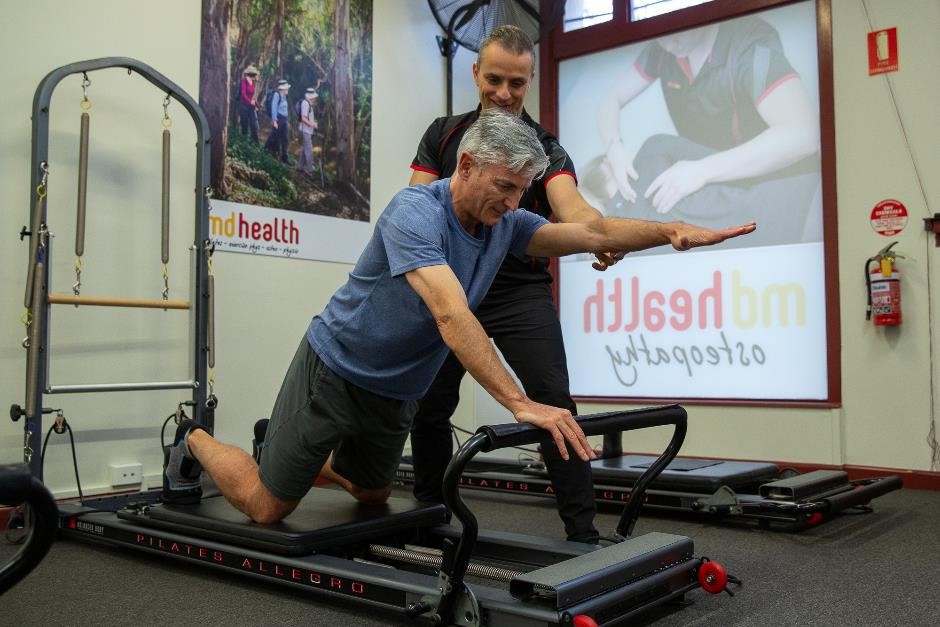
3. The right Pilates exercises to reduce back pain need to be individually selected for each person
The biggest difference between Clinical Pilates and exercise versus general Pilates classes is that exercises can individually selected for the person. No all exercises will work well for each person, due to their particular cause of back pain, skill level and overall strength level.
It is the role of the health professional to choice the right Pilates exercises that suit your needs, your injuries and your level of strength and skill.
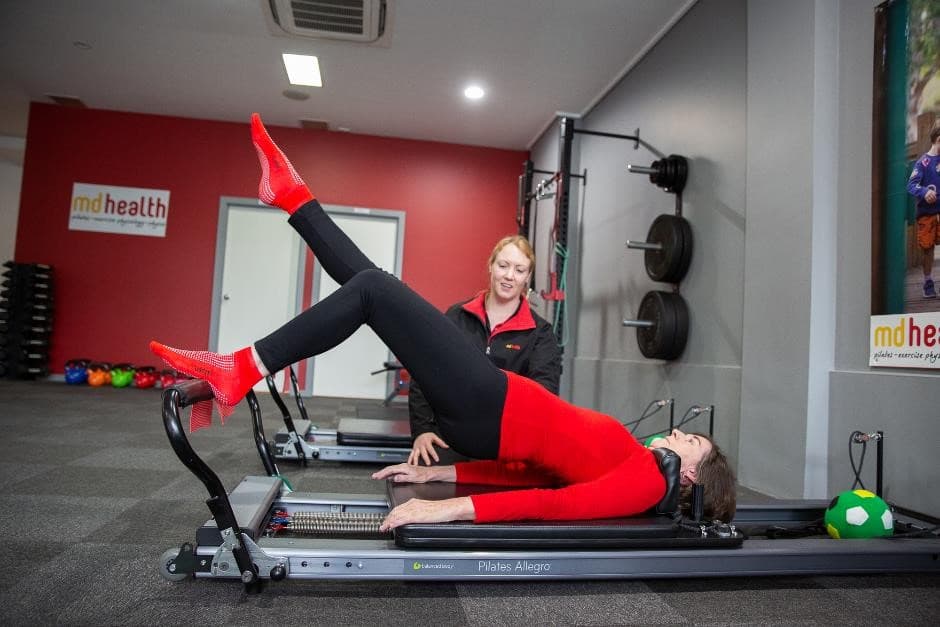
Studies and evidence on the effectiveness of Pilates for back pain
There have been several scientific papers published on the benefits of Pilates on lower back pain:
- Gladwell et al (2006) (“Does a Program of Pilates Improve Chronic Non-Specific Low Back Pain?”) in a study of 49 patients with chronic lower back pain found that are a 6 week program, patients who participated in the Pilates program focussing on specific stabilisation exercises incorporated into functional movement had less pain, improved sports function, improved flexibility and general health.
- Wells et al (2014) in a systematic review of 14 randamised control trials (“The Effectiveness of Pilates Exercise in People with Chronic Low Back Pain: A Systematic Review”) showed that Pilates showed greater improvements in pain and functional ability compared to usual care and general physical activity.
- In a further systematic review, La Touche et al (2008) (“Treating non-specific chronic low back pain through the Pilates Method”) found that not only does Pilates reduce lower back pain and improve function, but worked better if the exercises were adapted to the needs of the individual.
Some of the client’s stories of finding relief from back pain through Pilates
Here at MD Health, I’ve seen firsthand how our team of dedicated physiotherapists and exercise physiologists can make a real difference in your back pain management journey. We’re committed to working with you to create a personalized Pilates program that addresses your specific needs, ensuring you get the most out of your practice.
Rodney C – 54 year old with previous ongoing back pain:
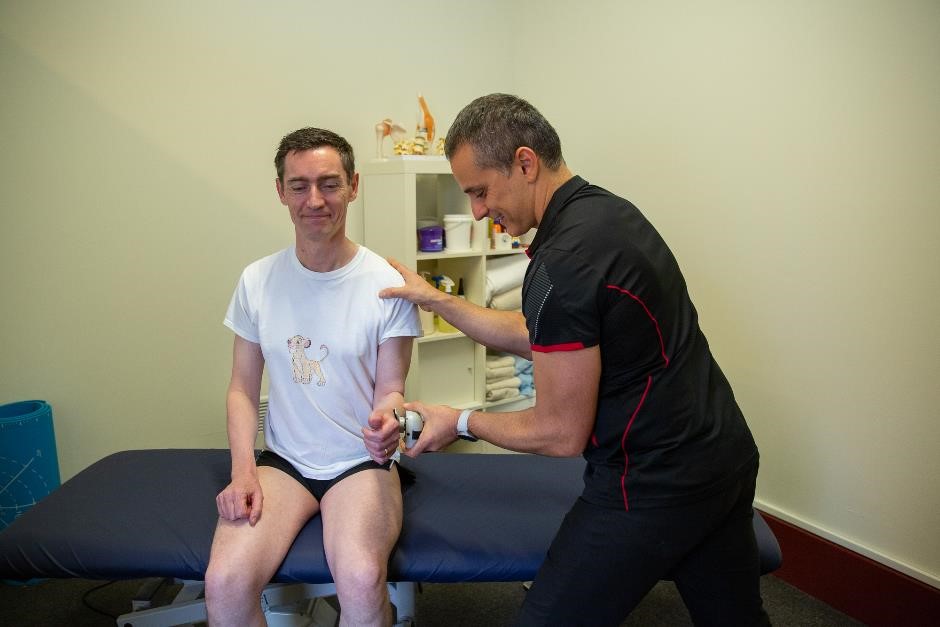
For many years I tried Chiropractic, Osteopathy, Pilates, Yoga and a myriad of alternative therapies that I tried whenever I thought something offered hope. This approach only kept me moving but the pain remained, eventually, that combination was no longer working and I continued to deteriorate. It was either give up work or find a solution, so I went searching again for another way.
At first I was just looking for a new Osteopath and wasn’t much interested in another exercise program that would again fail to deliver results. However, I undertook the program because it was a definitive 12 weeks and would be supported by my new Osteopath. I found the treatments and clinical exercise were tailored to my particular injuries and more importantly to how my body
responded. Other programs I tried either quickly solidified into an unchanging routine and pushed me too hard to the point where I dreaded going.
The entire team at MD Health are highly motivating and they pushed me beyond what I would have done myself but not so much that I wanted out.
Fast forward and MD Health have helped me:
1. overcome both chronic and acute pain
2. find enjoyment in exercise and actually want to exercise.
3. get more energy to take advantage of all the hours a day has to give.
4. live in a space of gratitude for a quality of life regained.
As a result, I am no longer experiencing that daily debilitating pain (which I still think is a miracle) and I look forward to every session as a highlight of my day. Thanks to all the team at MD Health, everyone I have dealt with there are genuine, friendly and professional.
Hakuna Matata (It means no worries for the rest of my days) 🙂 “
To read other client stories, click on:
- Rachel Martin’s story: https://mdhealth.com.au/client-story-ive-built-a-confident-body-so-can-you/
- Judy Czuchnowski’s stroy: https://mdhealth.com.au/ep-12-surgery-or-exercise-for-back-pain-a-client-perspective/
- Natalie Hall’s story: https://mdhealth.com.au/ep-7-coming-back-from-injury/
Tips for Incorporating Pilates into a Back Pain Management Routine
1. Consult with a Qualified Instructor
Before beginning a Pilates program, it’s crucial to consult with a qualified and certified instructor. Certified health professionals (such as physiotherapists, exercise physiologists and osteopaths) have undergone extensive training in Pilates and rehabilitation and they have a thorough understanding of anatomy, biomechanics, and rehabilitation principles.
They can assess your physical condition and recommend the most appropriate exercises for your specific needs. They can also help you avoid movements that may exacerbate your pain or injury.
One of the significant benefits of working with a health professional for Pilates is that they can create a customized program that addresses your specific needs. This program can take into account any injuries or physical limitations that you may have. It can also be adjusted as your condition improves, ensuring that you continue to progress.
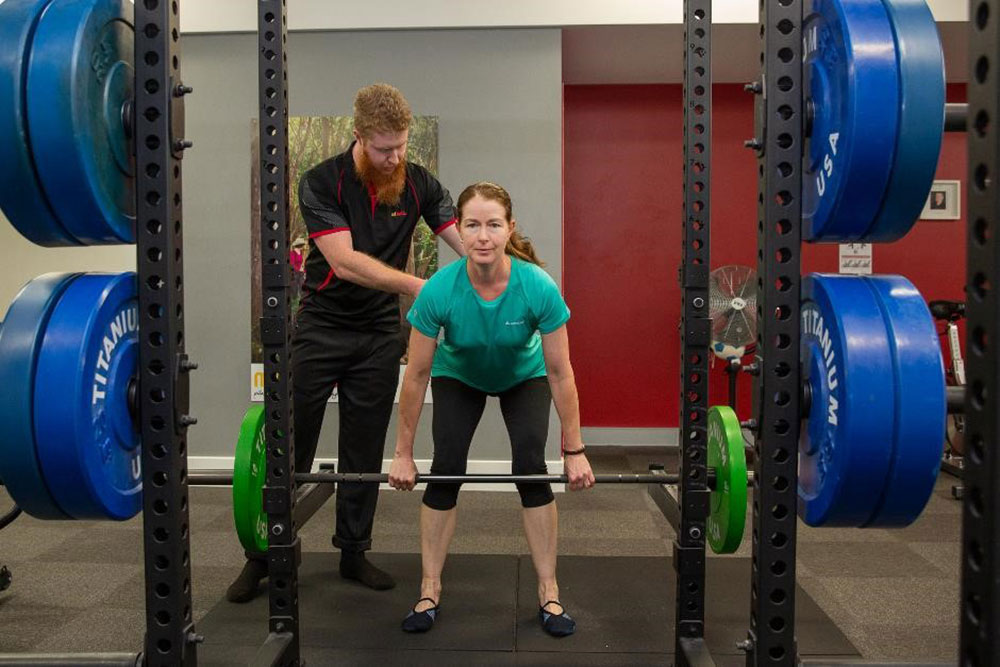
2. Start with Modified or Beginner Exercises and Gradually Increase Intensity
When beginning Pilates for back pain, it’s crucial to start with exercises that are appropriate for your current fitness level and gradually increase the intensity as your strength and flexibility improve.
This approach will not only help to prevent injury but also ensure that you’re getting the most benefit from your practice.
Modified and specific Pilates exercises are a great place to start if you’re new to the practice or have back pain.
These exercises are typically performed with modifications or props that make them more accessible and less strenuous on your back muscles. For example, you might use a small ball or foam roller to support your back during certain exercises.
As you progress and feel more comfortable, you can gradually increase the intensity of your Pilates practice.
This might mean performing the exercises without modifications, increasing the number of repetitions or sets, or adding more challenging exercises to your routine.
It’s essential to listen to your body and progress at a pace that feels comfortable and safe for you. Pushing yourself too hard too soon can lead to injury or setback, which can hinder your progress and prolong your recovery.
Here are some Pilates-specific exercises for low back pain that are helpful (again these exercises might be right for some people and NOT for others, it depends on your specific issues):
Pelvic Clock:
- Lie on your back with your knees bent and your feet flat on the floor.
- Imagine your pelvis as the face of a clock.
- Begin by tilting your pelvis towards 12 o’clock, flattening your lower back into the mat.
- Move your pelvis slowly clockwise to 3 o’clock, lifting your tailbone off the mat and maintaining a neutral spine.
- Continue to move clockwise to 6 o’clock, tilting your pelvis towards your feet, and then to 9 o’clock, lifting your hip bones off the mat.
- Repeat the movement in both directions for 6-8 repetitions.
Leg Circles:
- Lie on your back with your legs extended straight up towards the ceiling.
- Keeping your hips still and your core engaged, make small circles with one leg at a time.
- Repeat for 8-10 circles in each direction for each leg.
Swan:
- Lie face down on the mat with your hands at your sides, palms down.
- Engage your back muscles and lift your chest off the mat, keeping your neck long and your gaze forward.
- Lower your chest back down to the mat and repeat for 8-10 repetitions.
Side-Lying Leg Lifts:
- Lie on your side with your bottom arm extended straight above your head and your top hand resting on the mat in front of you.
- Keeping your top leg straight and your core engaged, lift your leg towards the ceiling.
- Lower your leg back down and repeat for 8-10 repetitions on each side.
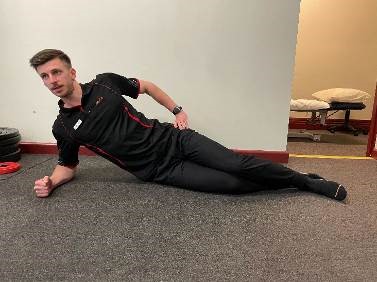
Incorporate Pilates into a Well-Rounded Exercise Routine
Incorporating Pilates and physiotherapy exercises specifically designed to address low back pain can make a significant difference in alleviating discomfort and promoting a healthy, strong, and flexible spine.
By focusing on exercises that target the muscles supporting the lower back and addressing any underlying imbalances or weaknesses, you can create a comprehensive approach to improving your low back health and overall fitness.
Here’s an example of a well-rounded exercise routine that incorporates Pilates and physiotherapy training, focusing on improving low back pain:
Monday:
- 30 minutes of brisk walking
- 30 minutes of Pilates with physiotherapy exercises (focusing on core strength, flexibility, and addressing any identified imbalances contributing to low back pain)
Tuesday:
- 30 minutes of swimming
- Strength training (upper body)
Wednesday:
- Rest day or gentle stretching
Thursday:
- 30 minutes of cycling
- 30 minutes of Pilates with physiotherapy exercises (focusing on posture, balance, and targeted strengthening to support the lower back)
Friday:
- 30 minutes of brisk walking
- Strength training (lower body)
Saturday:
- 30 minutes of brisk walking
Sunday:
- Rest day or gentle stretching
So there you have it, my friends! Pilates offers an excellent way to manage back pain, thanks to its focus on core strength, flexibility, and postural alignment.
By incorporating Pilates into a well-rounded exercise routine, many individuals can experience significant improvements in their pain levels, mobility, and overall quality of life.
If you’re curious about how Pilates can help with your back pain or simply want to learn more about our services at MD Health, please don’t hesitate to get in touch. We’re always here to chat, answer your questions, and support you on your path to better spinal health and improved overall well-being. Remember, we’re in this together, and we’re excited to help you discover the fantastic benefits of Pilates for a healthier, pain-free back!
Do you have any questions?
- Call us on (03) 9857 0644 or (07) 3505 1494 (Paddington)
- Email us at admin@mdhealth.com.au
- Check out our other blog posts here
Our clinical staff would be happy to have chat if you have any questions.
Take the first step to a healthier you!
Would you prefer for someone to contact you to book your FREE Full Body Assessment*?
Please fill in this form and someone from MD Health will be in touch with you soon.
Alternatively please call us on:
07 3505 1494 (Paddington – Brisbane (QLD) Clinic)
Or email us:
admin@mdhealth.com.au (VIC) paddington@mdhealth.com.au (QLD)
*Please note only the Full Body Assessment is a FREE service. The Full Body Assessment is for new clients at MD Health or returning clients who haven’t been in for 6 months or longer who intend to particpiate in our 13 Week Clinical Pilates Program**.
For all new clients who wish to come in for a one-off, casual or adhoc basis for Physiotherapy or Exercise Physiology the Initial Physiotherapy or Initial Exercise Physiology appointment is a paid service.
** The 13 Week Clinical Pilates Program at MD Health is not a lock in contract and you are not required to attend for the full 13 weeks if you do not wish.
This site is protected by reCAPTCHA and the Google Privacy Policy and Terms of Service apply.
